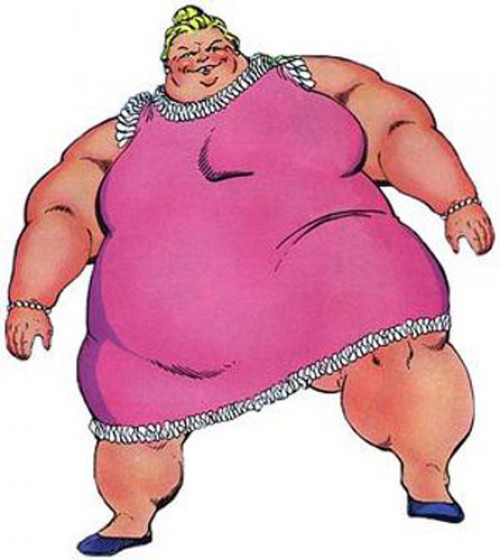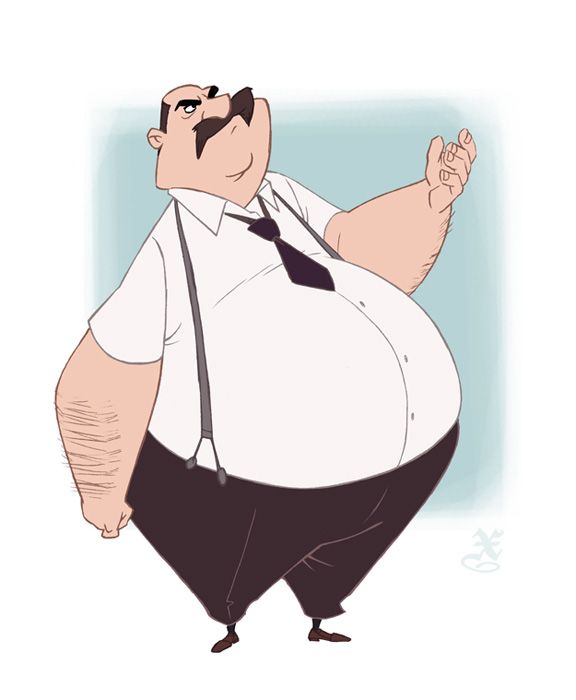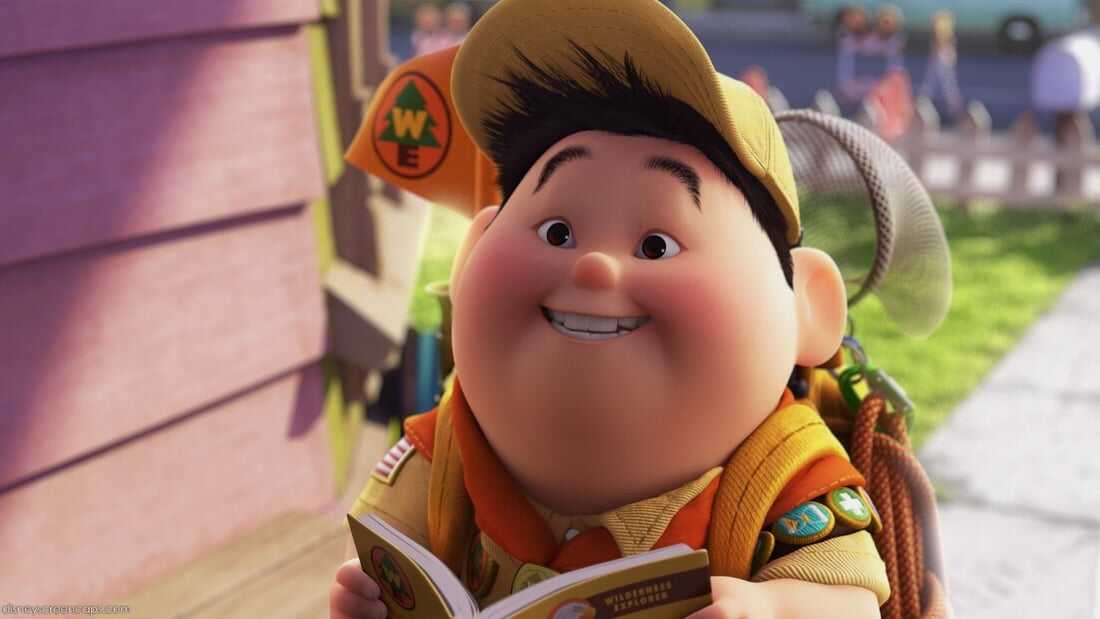Fat Characters Cartoon: The Heart Of Animation That Redefines Norms
Ever wondered why fat characters cartoon have become such a staple in the world of animation? They’re not just oversized; they’re oversized with personality, humor, and a touch of rebellion against traditional body standards. These characters bring something unique to the screen that resonates deeply with audiences worldwide. From classic cartoons to modern hits, fat characters have carved out their own lane in the animated universe, proving that size truly doesn’t matter when it comes to charm and charisma.
Let’s face it, fat characters cartoon are more than just entertainment. They’re a reflection of society, challenging stereotypes and embracing diversity. Think about it—these characters are often the heart and soul of their shows, bringing laughter, warmth, and sometimes even a dose of wisdom. They’re lovable, relatable, and unforgettable. Whether they’re sidekicks or main protagonists, they’ve earned a special place in our hearts.
So, buckle up, because we’re diving deep into the world of fat characters cartoon. From their origins to their impact on pop culture, we’ll explore everything you need to know about these animated icons. And hey, who knows? You might just discover a new favorite character along the way!
Read also:Charlie Austin The Rising Star Of Football And His Remarkable Journey
Table of Contents:
- Biography of Fat Characters
- History of Fat Characters Cartoon
- Famous Fat Characters in Animation
- Cultural Impact of Fat Characters Cartoon
- Breaking Stereotypes with Fat Characters
- Modern Trends in Fat Character Design
- Psychology Behind Fat Characters
- Industry Views on Fat Characters
- The Future of Fat Characters Cartoon
- Conclusion
Biography of Fat Characters
Before we dive into the juicy details, let’s take a moment to understand the essence of fat characters cartoon. These characters aren’t just blobs of animation; they’re carefully crafted personalities designed to stand out. They often represent a range of emotions, from comedic relief to deep emotional struggles. Their oversized figures are more than just a design choice—they’re a statement.
Key Traits of Fat Characters
What makes these characters so memorable? Here’s a quick breakdown:
- Humor: They’re often the source of laughs in their shows.
- Empathy: Many fat characters have a soft spot and are deeply caring.
- Resilience: Despite the challenges they face, they keep pushing forward.
- Uniqueness: Their designs are distinct, making them instantly recognizable.
Now, let’s check out some basic information about these characters:
| Character Name | Show | Creator | Year Introduced |
|---|---|---|---|
| Homer Simpson | The Simpsons | Matt Groening | 1989 |
| Patrick Star | SpongeBob SquarePants | Stephen Hillenburg | 1999 |
| Garfield | Garfield and Friends | Jim Davis | 1982 |
History of Fat Characters Cartoon
The history of fat characters cartoon dates back to the early days of animation. Back then, these characters were often used as comic relief, but over time, they’ve evolved into complex personalities with rich backstories. Think about Popeye’s nemesis, Bluto. He was big, boisterous, and a tad bit obnoxious, but audiences couldn’t get enough of him.
As animation progressed, so did the portrayal of fat characters. They started to break free from the mold of being just sidekicks and became central figures in their own stories. This shift was a game-changer, allowing audiences to see them in a new light.
Read also:Alexandra Dad Unveiling The Life Achievements And Legacy
Early Influences
Some of the earliest influences came from vaudeville and slapstick comedy. Animators drew inspiration from these performances, creating characters that were exaggerated in every way possible. The result? Characters that were larger-than-life, both in personality and physique.
Famous Fat Characters in Animation
When it comes to fat characters cartoon, there are a few that immediately come to mind. These characters have become cultural icons, recognized by fans all over the world.
Homer Simpson: The Everyman
Homer Simpson is arguably one of the most famous fat characters in animation. Created by Matt Groening, Homer has been a staple in households for over three decades. His love for donuts, beer, and his family makes him relatable to millions of viewers.
Patrick Star: The Best Friend
Patrick Star, from SpongeBob SquarePants, is another beloved fat character. Known for his laid-back attitude and childlike wonder, Patrick brings a sense of joy to every episode. His friendship with SpongeBob is a testament to the power of loyalty and acceptance.
Cultural Impact of Fat Characters Cartoon
Fat characters cartoon have had a significant impact on pop culture. They’ve challenged societal norms and encouraged audiences to embrace diversity in all its forms. By showcasing characters of all shapes and sizes, animation has opened the door for more inclusive storytelling.
Breaking Down Barriers
These characters have helped break down barriers by proving that being different is okay. They’ve shown that size doesn’t define someone’s worth or potential. This message has resonated with audiences of all ages, inspiring them to be more accepting of others.
Breaking Stereotypes with Fat Characters
While fat characters cartoon have come a long way, they’re not without their challenges. Stereotypes still exist, and animators must be mindful of how they portray these characters. The key is to create well-rounded personalities that go beyond the surface level.
Challenging Negative Perceptions
One way animators are challenging negative perceptions is by giving fat characters more depth. They’re no longer just the funny sidekick; they’re now complex individuals with their own goals, dreams, and struggles. This shift has helped reshape how audiences view these characters.
Modern Trends in Fat Character Design
Today’s animators are pushing the boundaries of fat character design. They’re experimenting with new styles and techniques to create characters that are both unique and relatable. This has led to a surge in diversity within the animated world.
Innovative Approaches
From exaggerated proportions to more realistic designs, modern animators are taking fat characters to new heights. They’re using technology and creativity to bring these characters to life in ways that were once unimaginable.
Psychology Behind Fat Characters
There’s a lot of psychology behind fat characters cartoon. They often serve as a mirror for society, reflecting our fears, desires, and insecurities. By understanding the psychology behind these characters, we can gain a deeper appreciation for their role in animation.
Why We Love Them
One reason we love fat characters is because they’re relatable. They remind us that it’s okay to be different and that imperfections are what make us unique. This message is powerful, especially in a world that often values conformity.
Industry Views on Fat Characters
Within the animation industry, fat characters cartoon are viewed as both a challenge and an opportunity. They require careful consideration to ensure they’re portrayed in a positive light. However, when done right, they can be incredibly impactful.
Challenges and Opportunities
One of the biggest challenges is avoiding stereotypes while still creating characters that are true to their nature. On the flip side, the opportunity to create diverse and inclusive content is immense. Animators have the power to shape how audiences perceive fat characters, and that’s a responsibility they take seriously.
The Future of Fat Characters Cartoon
The future of fat characters cartoon looks bright. As society continues to embrace diversity, we can expect to see even more representation in animation. This trend will undoubtedly lead to richer storytelling and more dynamic characters.
What’s Next?
What’s next for fat characters? Likely, we’ll see them take on even bigger roles in animated series. They’ll continue to challenge stereotypes and inspire audiences worldwide. The possibilities are endless, and the animation industry is ready to embrace them.
Conclusion
In conclusion, fat characters cartoon have come a long way. From their humble beginnings as comic relief to their current status as cultural icons, they’ve proven that size doesn’t matter when it comes to charm and charisma. They’ve challenged stereotypes, inspired audiences, and reshaped the animated landscape.
So, the next time you watch your favorite cartoon, take a moment to appreciate the fat characters. They’re more than just entertainment; they’re a reflection of society and a testament to the power of diversity. And hey, don’t forget to share this article with your friends and leave a comment below. Let’s keep the conversation going!


